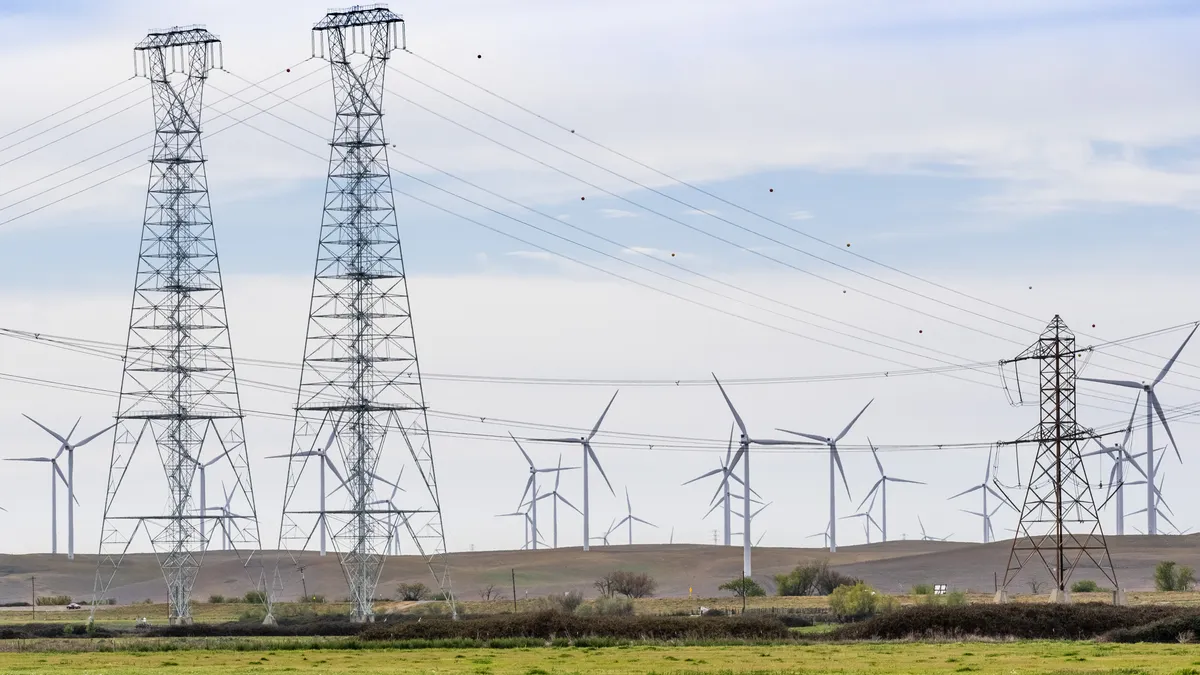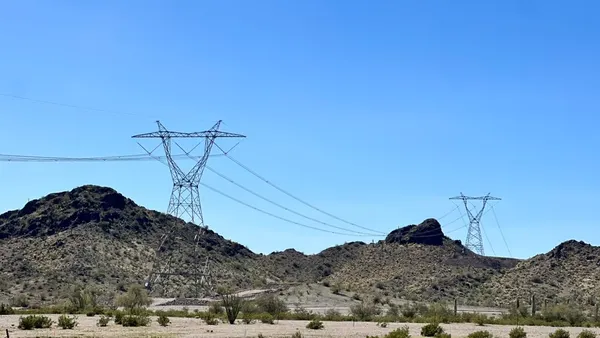Dive Brief:
-
Invenergy Transmission’s proposed Grain Belt Express Line project, or GBX Line, will be excluded from the second part of the Midcontinent Independent System Operator’s long range transmission plan, the grid operator said Wednesday in a filing at the Federal Energy Regulatory Commission.
-
The 5,000-MW GBX Line, set to run from Kansas to Indiana, is not eligible to be included in MISO’s transmission planning process, the grid operator said in response to a complaint Invenergy filed.
-
“The GBX Line, in its current state, is not an ‘advanced stage merchant transmission facility’ Invenergy claims it to be,” MISO said. “MISO properly applied its tariff, which is reasonably designed to prevent early stage proposals with ever shifting assumptions and specifications from impacting MISO’s [transmission] studies.”
Dive Insight:
The dispute centers on whether Invenergy’s 800-mile GBX Line should be included in MISO’s transmission planning processes.
In its August complaint, Invenergy said FERC should order MISO to provide a “transparent and well-defined” process to incorporate advanced-stage merchant transmission projects in the annual base case analysis the grid operator prepares as part of its transmission expansion plan, including its long range transmission plan.
Failing to include merchant projects — transmission facilities that don’t rely on direct ratepayer support — in transmission plans produces “inefficient” results that can drive up customer rates, according to Invenergy.
The GBX Line, for example, wasn’t included in MISO’s analysis for its recently approved $10.3 billion first tranche of projects under its LRTP.
“The amount of electricity the bi-directional GBX Line will inject into MISO will necessarily impact modeled production cost savings, congestion and fuel savings and other benefits that MISO identified in its analysis,” Invenergy said in its complaint, adding that its project could be operating years before the Tranche 1 projects.
In addition to directing MISO to change its rules for merchant transmission projects, FERC should order the grid operator to include the GBX Line in its base case that it will use to evaluate Tranche 2 projects, according to Invenergy.
MISO told FERC, however, that Invenergy failed to show that its eligibility criteria for being included in its transmission planning were flawed or that the grid operator failed to follow its rules.
MISO said it will not include the 1,000 MW of GBX Line output that could interconnect in the grid operator’s footprint in the LRTP Tranche 2 process because it doesn’t meet either of two required conditions.
To be included, a transmission project must either be represented in a utility integrated resource plan — or in a “preferred plan” for utilities that don’t have an IRP — or the project must have an interconnection agreement as of this month, MISO said.
SOO Green HVDC Link ProjectCo, which is developing a merchant transmission project between MISO and the PJM Interconnection, supports Invenergy’s complaint, according to comments it filed at FERC last month.
“A portfolio that excludes late-stage merchant transmission projects from consideration cannot be just and reasonable,” the company said.
SOO Green has pending complaints at FERC arguing that PJM’s treatment of merchant projects is flawed.
Meanwhile, transmission owners in MISO, mostly utilities, urged FERC to reject Invenergy’s complaint.
“The commission should not allow Invenergy to undo the LRTP Tranche 1 approval and endanger the region’s ability to address without delay the looming reliability issues that have been identified,” the transmission owners said in comments last month. “As a project that is not yet certain, MISO properly excluded the GBX Line from the planning studies for LRTP projects.”















